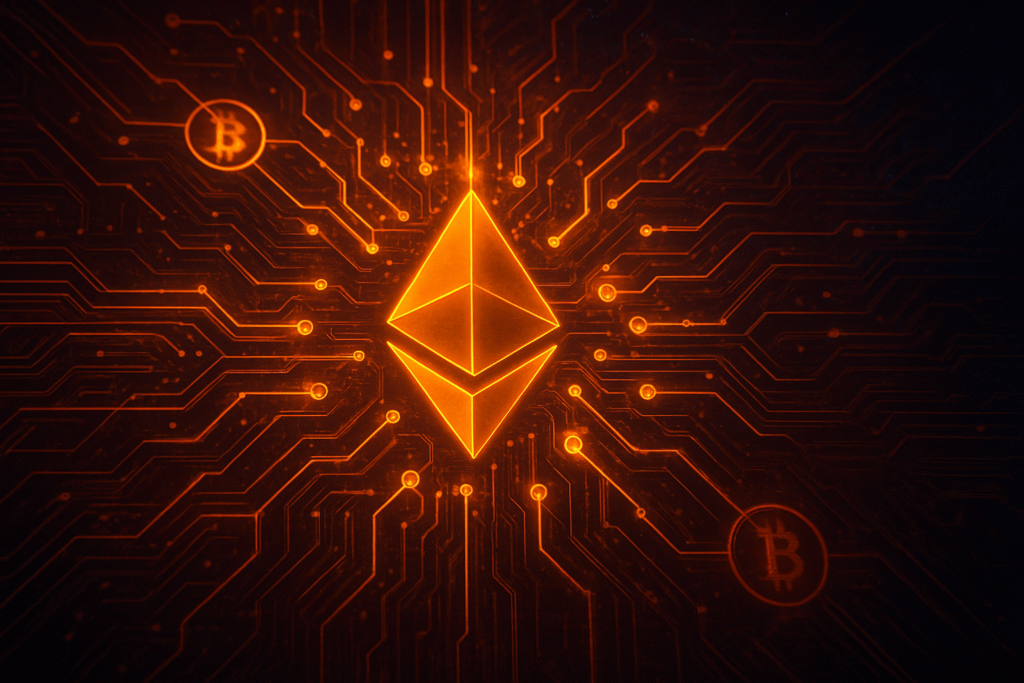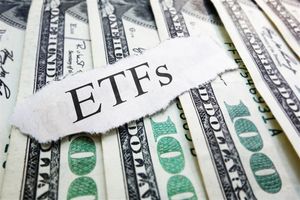
October 29, 2025 – A pivotal moment for the Ethereum network is unfolding as the highly anticipated "Fusaka" upgrade has successfully gone live on the Hoodi testnet, marking the final testing phase before its monumental mainnet activation. Scheduled for December 3, 2025, Fusaka is poised to be one of Ethereum's most significant overhauls since "The Merge," introducing a suite of technical enhancements designed to drastically improve the network's scalability, efficiency, and security. This upgrade is a critical step in Ethereum's "Surge" roadmap, aiming to prepare the blockchain for mass adoption by making it faster, cheaper, and more robust.
The successful testnet deployments, including earlier activations on Holesky and Sepolia, have instilled strong confidence across the crypto community and developer ecosystem. This development signals that Ethereum is on track to deliver on its promise of a more performant and accessible blockchain. The implications for the broader crypto ecosystem are profound, promising to reshape the landscape for decentralized finance (DeFi), non-fungible tokens (NFTs), and Web3 applications by significantly lowering transaction costs and increasing throughput, thereby fostering an environment ripe for innovation and wider utility.
Market Impact and Price Action
The impending mainnet launch of the Fusaka upgrade on December 3, 2025, is generating considerable bullish sentiment within the cryptocurrency market, particularly for Ethereum (ETH). Following successful testnet deployments, market participants are keenly anticipating the fundamental improvements Fusaka will bring, leading to expectations of positive price movements for ETH. The current trading price for Ether is hovering around $4,000, with analysts projecting potential new all-time highs post-upgrade.
Leading up to the mainnet activation, the market has likely entered a "buy the rumor" phase, with increased buying pressure fueled by the anticipation of enhanced network utility. Post-upgrade, forecasts suggest ETH could exceed $6,500 in 2025, with some optimistic projections reaching $7,500 or even $10,000 by the end of the year or in subsequent years. Average projected prices for 2025 are around $4,200, with an upside potential to $5,500 if institutional demand and staking participation continue their growth trajectory. The Fusaka upgrade is widely seen as a significant catalyst for Ethereum's long-term value, driven by improved efficiency, reduced costs, and broader enterprise integration.
Trading volume is expected to surge as investors position themselves for the upgrade, reflecting heightened speculative activity. On-chain data indicates a resumption of accumulation by "whales" (wallets holding 100-10,000 ETH), and Ethereum treasury firms are showing increased supply dominance over Bitcoin counterparts, suggesting growing institutional interest and a potential increase in liquidity across the ecosystem. Technically, traders will be monitoring key resistance levels, particularly the $4,420 to $4,700 range, and the psychological barrier of $5,000. A definitive breakthrough above these levels post-upgrade could signal strong bullish momentum. Support levels around $4,420 will be crucial to watch for trend validation or potential pullbacks. While past upgrades have sometimes seen "sell the news" reactions, the phased rollout of Fusaka might mitigate extreme volatility, allowing for sustained positive reactions as each stage is successfully implemented.
Community and Ecosystem Response
The Ethereum community and broader crypto ecosystem have reacted with widespread optimism and anticipation to the successful testnet deployments of the Fusaka upgrade and its imminent mainnet launch. Social media channels are abuzz with discussions centered on the practical benefits for everyday users: cheaper and faster transactions, particularly on Layer 2 networks. The community views Fusaka as a crucial evolutionary step, propelling Ethereum towards a more scalable, user-friendly, and globally accessible network capable of supporting millions of active wallets and complex decentralized applications without prohibitive costs.
Crypto influencers and thought leaders, including Ethereum co-founder Vitalik Buterin, have lauded Peer Data Availability Sampling (PeerDAS) as "the key to layer-2 scaling." Joseph Young, a prominent analyst, has highlighted the upgrade's foundational improvements in scalability, efficiency, node health, and data availability as profoundly positive for Ethereum's future. This expert consensus, coupled with a significant surge in stablecoin usage on Ethereum—seen as "dry powder" awaiting deployment—further fuels the bullish sentiment, with some influencers projecting substantial ETH price appreciation.
The impact on related DeFi protocols, NFT projects, and Web3 applications is expected to be transformative. The dramatic reduction in Layer 2 transaction costs, driven by PeerDAS (EIP-7594) and increased blob capacity, is anticipated to make interactions with these applications significantly more affordable. Estimates suggest L2 transaction fees could be cut by up to 30%, with blob capacity expanding by over 400%, potentially leading to near-zero transaction costs. This enhanced scalability and throughput, alongside improved developer tools and security hardening, is expected to foster an explosion of innovation, attract more dApp creators, and ultimately drive mainstream adoption by making Ethereum more competitive with high-speed Layer 1 blockchains like Solana (SOL) and Avalanche (AVAX).
What's Next for Crypto
The Ethereum Fusaka upgrade, set for mainnet activation on December 3, 2025, heralds a new era for the crypto market, with both short-term and long-term implications. In the immediate aftermath, users of Layer 2 solutions such as Arbitrum (ARB) and Optimism (OP) are expected to experience a noticeable reduction in transaction fees. This newfound efficiency and affordability are likely to spur increased network activity and attract new users and applications to the Ethereum ecosystem, strengthening its competitive stance against rival Layer 1 blockchains.
Looking further ahead, Fusaka is poised to accelerate institutional adoption. The significant reduction in node operational costs, potentially up to 40% due to PeerDAS, lowers the barrier for financial institutions and enterprises to engage with Ethereum. This could lead to broader integration of Ethereum-based solutions in DeFi, supply chain management, and digital identity, leveraging the network's enhanced reliability and throughput. Fusaka also lays critical groundwork for future scalability initiatives, particularly the upcoming "Glamsterdam" upgrade, which will introduce parallel execution (EIP-7928) to further boost transaction processing capabilities, positioning Ethereum for sustained growth as a global settlement layer.
Strategic considerations for projects and investors are paramount. Projects should optimize their strategies for Layer 2 deployments to fully capitalize on reduced costs and increased throughput, exploring new use cases previously hampered by high gas fees. For investors, Fusaka reinforces the case for long-term ETH investment, viewed as a catalyst for value growth. Diversification, alongside close monitoring of Layer 2 adoption metrics, transaction volumes, and institutional capital inflows, will be crucial. The most likely scenario is a successful deployment leading to significant reductions in L2 costs and increased network activity, solidifying Ethereum's position as a leading smart contract platform, though moderate success is also plausible depending on broader market dynamics.
Bottom Line
The Ethereum Fusaka upgrade represents a monumental leap forward for the world's second-largest blockchain, solidifying its commitment to scalability, efficiency, and user experience. For crypto investors and enthusiasts, the key takeaways are clear: expect significantly faster transactions, dramatically reduced costs on Layer 2 networks, and a substantial increase in overall transaction throughput. The introduction of PeerDAS (EIP-7594), alongside an increased block gas limit from 45 million to 150 million, will fundamentally transform how users interact with the network and how developers build on it.
The long-term significance of Fusaka cannot be overstated. It is a critical component of Ethereum's "Surge" roadmap, establishing foundational improvements like Verkle Trees that will support light clients and mobile adoption, while laying the groundwork for future upgrades like "Glamsterdam" and full Danksharding. This upgrade positions Ethereum as an enterprise-grade infrastructure, reducing node costs by up to 40% and making it a more attractive and reliable platform for institutional asset holders, thereby paving the way for wider integration in areas like DeFi and real-world asset (RWA) tokenization.
Ultimately, Fusaka is expected to be a powerful catalyst for broader crypto adoption. By making Ethereum more accessible, affordable, and performant, it removes significant barriers for mainstream users and accelerates institutional integration. This enhanced competitiveness against other Layer 1 blockchains, coupled with Ethereum's proven reliability, strengthens its role as the foundational layer for the expanding Web3 ecosystem. Following the mainnet launch on December 3, 2025, stakeholders should closely monitor the phased rollout progress, Layer 2 performance metrics (especially transaction costs), network activity (daily active addresses, TVL), and institutional capital inflows as key indicators of Fusaka's success and its profound impact on the future of decentralized technology.
This article is for informational purposes only and does not constitute financial or investment advice. Cryptocurrency investments carry significant risk.







